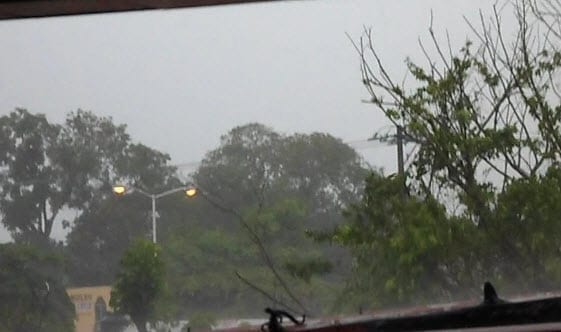
BOSTON, Aug. 10, 2012 – According to catastrophe modeling firm AIR Worldwide, Tropical Storm Ernesto made its second landfall on Thursday, August 9 at around 1:00 PM CDT in southern part of the Mexican state of Veracruz. Wind damage is expected to be minimal, but the storm’s heavy rainfall is expected to continue throughout the day, even as the system dissipates. Significant insured losses are currently not expected from Ernesto. Interestingly, global models suggest that the remnants of Ernesto may redevelop into a tropical cyclone early next week after exiting into the Eastern Pacific.
“Ernesto made its first landfall in Quintana Roo late Tuesday night local time at Category 1 hurricane strength (with maximum sustained winds of approximately 85 mph),” said Dr. Tim Doggett, principal scientist at AIR Worldwide. “The storm then weakened as it tracked across the Yucatan peninsula, re-emerging into the Bay of Campeche during the day on Wednesday. Back over water, Ernesto drew warm maritime air back into the system, which significantly increased the thunderstorm activity around the center of circulation. As a result, maximum sustained winds increased to approximately 70 mph (strong tropical storm) and the minimum central pressure dropped to an estimated 993 mb.”
“Ernesto tracked along the coast of southern Veracruz state before coming ashore just west of the port city of Coatzacoalcos around 1:00 PM CDT (18:00 UTC) on Thursday. Maximum sustained winds at second landfall were around 60 mph. The storm decayed rapidly as it moved over land and interacted with mountainous terrain of southern Mexico.”
As of the National Hurricane Center’s 4 AM CDT advisory today, Tropical Depression Ernesto had maximum sustained wind speeds of 35 mph and is located in southern Puebla. It is forecast to continue weakening and is expected to dissipate by early this afternoon over the state of Guerrero.
Dr. Doggett continued, “The interaction of the storm with mountainous terrain in the interior of Mexico is producing heavy precipitation over much of central and southern portions of the country. As the remnants of Ernesto continue to track west, the storm continues to have the potential to cause heavy rainfall and flooding.”
Some mountainous areas in the states of Veracruz, Tabasco, Puebla and Oaxaca could receive isolated rainfalls amounts of up to 15 inches. The city of Coatzacoalcos received more than seven inches of rain prior to Ernesto’s landfall, and San Pedro reported more than 10 inches, according to the Mexican weather service.
According to AIR, in Mexico, insured residential properties are largely of confined masonry construction, while insured commercial properties are overwhelmingly of confined masonry and reinforced masonry. Against Ernesto’s reported wind speeds, both construction types should fare well. Indeed, minimal wind damage has been observed so far, although there are reports of roofs being blown off. These were most likely poorly constructed homes. Other structures may experience minor damage to roof and wall claddings.
According to Veracruz officials, no major flooding has yet occurred on any of the state’s rivers and major tributaries, although minor landslides are reported to have blocked some roads, including two in the state of Puebla.
AIR will continue to monitor this storm and will provide additional information as events warrant.
For more Live Insurance News updates.
